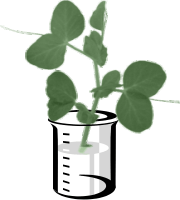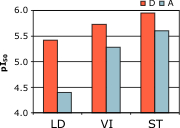Treatment with herbicides
There are several approaches for the application of herbicides to the target plants - spraying with pulverizer, vacuum infiltration of leaves, soaking the leaves in herbicide solution or adding the herbicide to the soil (or nutrient solution) and allowing the plant to uptake it through the roots.
For the analytical purpose of testing the herbicide sensitivity of the plants, the treatment procedure must strictly meet these criteria:
- Efficiency - the treatment must effectively deliver the herbicide to the target site (the chloroplast thylakoid membranes) so that the herbicide effect is well expressed.
- Precision - the treatment should provide a tight correlation between the applied dose of the herbicides (the concentration of the herbicide solution) and the effective dose (the herbicide concentration at the target site).
- Reproducibility - the results of the treatment must have minimal variability in order to be statistically representative.
To find the most appropriate procedure, we have tested three different treatment methods for their efficiency, precision and reproducibility.
Leaf diffusion
Detached leaves are sandwiched between two layers of filter paper and immersed into hebricide solution of the wanted concentration for 2 hours while illuminated by white light with intensity of 50 µmol m−2 s−1 (we found that an optimal light intensity was of great importance for achieving good results).
Infiltration
Detached leaves were put into a plastic syringe with 10 ml herbicide solution. The syringe's tip was closed and the piston was pulled out to attain low pressure. The leaves were infiltrated by pressing the piston back. The procedure was repeated three times until becoming evenly translucent. After that the leaves were kept floating on herbicide solution for 1 h.
Stem transport
Whole plants were used in this type of treatment. The roots were excised under water, the stems were dipped into glasses filled with herbicide solution (Fig. 10) and kept for 12 h in darkness and then 10 h under illumination with intensity of 50 µmol m−2 s−1.
Comparison of the three methods
Leaf diffusion had the least efficiency of the three methods as can be seen on Fig. 11. Low concentrations of the herbicides had no detectable effect and even the highest concentrations used (3 mM) did not completely saturate the inhibitory effect.
Infiltration had much higher efficiency than leaf diffusion, especially for atrazine (Fig. 11). However, this method showed poor reproducibility and is therefore not suitable for analytical purposes because the results would not be statistically representative. Also, the infiltration procedure alone imposed a significant physical stess on the leaves and their photosynthetic characteristics degraded even without adding herbicides.
Stem transport was found to be the most efficient and the most reliable method for treatment with diuron or atrazine. These herbicides dissolved in water are readily uptaken by the plants with the transpiration stream and transported through the stems and leaves via the apoplastic route (the xylem). Stem transport has another advantage over the other two methods in that it keeps the plants as intact as possible and the measured effects on photosynthesis are due only to the herbicide action and not due to the treatment procedure alone.

